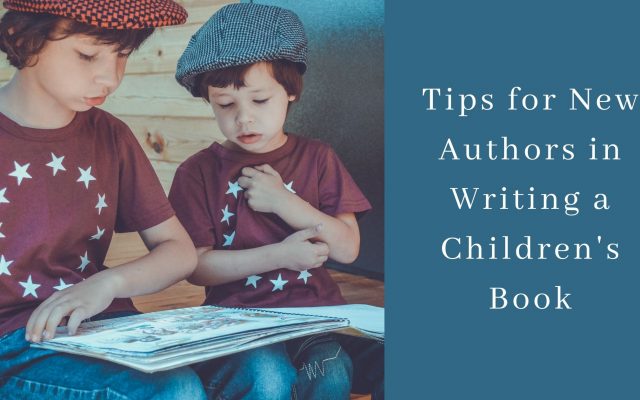Writing a short story could be a bigger challenge than writing a novel. You need to stuff everything, from building the plot, creating the pace, and developing the characters to adding twists and resolving the climax, in less than 50 pages. If done well, short stories can be just as powerful, impactful, and bestselling as longer works of fiction in the book publishing industry. If you have different ideas, stories, or topics that interest you but are afraid you cannot develop them into a 400 paged novel, you can create and publish a short storybook with Writat. Simplifying the process, this blog will help you figure out how to write and publish Short Stories book.
How Many Words Do Short Stories Typically Have
The length of short stories varies in fiction, but some literary journals, book magazines, book publishing houses, or competitions may have specific word counts for their short story submissions. However, typically a short story fiction has 1000 to 7000 words. Novels and full-fledged books are 30,000 words or more.
Quick Read: Want to Write a Short Story in Romance Genre? Read How to write a romantic novel.
How Many Short Stories Make a Book for Self Publishing
Typically, a sufficient number is anywhere between eight and twenty short stories. This depends upon the publisher’s editorial guidelines, the author’s ultimate self-publishing vision, and the length of each individual short story. However, there are short story books that have fewer or more stories than the mentioned range. Example: Legend of Lakshmi Prasad by Twinkle Khanna, which has only four stories.
What Kind of Short Stories Can You Write
You can self-publish several kinds of short stories with Writat. Here are the most popular types of short stories that authors write these days:
Flash Fiction: Also known as micro-fiction, these are less than 1000 words short stories packed with a compelling story and a proper beginning, middle, and end. It requires a great deal of skill to write flash fiction.
Personal Essays and Memoirs: Short stories based on the author’s own life experiences. They can be any genre or any topic, ranging from marriage and life to society and career.
Genre Fiction: This is a popular self-publishing category comprising short stories with specific genres, written with the intention to engage and entertain readers for a short time. They can be horror, rom-com, comedy, romance, supernatural, thriller, fantasy, or science fiction.
Children’s Book: Short stories for children are incredibly famous in the book publishing industry. You can write comics, good night stories, moral-based stories, mythological stories, fairy tales, and funny stories that end with a good punch or play on words. They are often referred to as Feghoot. Although, Feghoots are popular in teen and young adult fiction writing.
Fable: Fable is much like a parable that features only anthropomorphic beings, like animals, plants, and non-human characters with human-like qualities. Example: Groot. Fable are moral-based stories that have been used for centuries to teach kids ethics, traditions, and values.
Drabble: It is a 100-word long short story, including the title. It takes inspiration from a Monty Python sketch in which individuals were asked to write a story in six words. Drabble is essentially created to test a writer’s skills in putting across the meaning in a few words.
Anecdote: An anecdote is a short narrative, often a funny or exciting incident of someone’s life, an event, or even your life. It is more like a parable that serves to put an important moral across. They can be written in different contexts, factual or fictional, and often rely on description and interesting language to kindle the reader’s imagination.
Also read: Why should you publish a short story as an eBook?
Types of Short Story Books for Self-Publishing
Before you start writing a short story, determine your purpose – what do you want to do with your story, and where do you want to publish it?
You cannot simply self-publish a book with a single short story of 1000 words. You need at least 8 stories to create a book. You have different options, and depending upon your genre, theme, and style of writing, here are some examples of short story books:
- Anthologies : These are short stories from multiple authors. Examples are The Scottish Bride, The Lady Most Likely, and Three Thousand Stitches.
- Solo Collection : Collection of stories from a single author. Example – Stories by Rabindranath Tagore.
- Literary Journal : A collection of poems, short stories, essays, anecdotes, and other works of fiction gathered from established or emerging writers.
- Humor : Short stories with the same theme, such as comedy, rom-com, or humor, often from the same author or different writers.
- Mystery & Horror: Contain an assortment of mystery stories, often with a common theme, detective, or protagonist. Example: Sherlock Holmes
- Science Fiction : Stories with fantasy, supernatural, or fringe genre that explores various themes and different worlds.
- Young Adult : Heard about Chicken Soup for the Souls? These are stories personalized for young adults with beautiful themes, such as open heart conversations, rekindling spirits, and social identity.
You must decide what you want to do with your short story before writing it – collaborate with another author or write a series of fiction and self-publish a book out of them.
How to Write Short Stories Book for Self-Publishing
What Does a Good Short Story Need?
As a writer, it is challenging to publish a short storybook through traditional book publishing channels. Book publishers are generally not eager to publish a collection of short stories, no matter how exciting they are. With digital publishing, however, you have a chance to push your book to the top of the bestseller chart.
To ensure your book sells well, you must feature the following elements in your short stories:
- A clearly defined subject, mood, idea, or feeling. This can be a genre like horror, an idea like marriage, an emotion like love, or a combination of two or more.
- Having a definite point of view. This is essentially knowing what you want your readers to feel or think as they read your book.
- Clear language and choice of vocabulary with sharp and crisp editing to make sure the story is quickly conveyed to the reader.
- Limited cast of characters, not more than two main leads, one or two supporting characters, and a villain.
- Taking risks and adding experimental elements to see what works best for you as a writer. This will help you write your novels better.
While you are doing this, you can also find out How to Write and Publish a Book in Seven Days.
Identify Your Idea
If you are not the writer who can pluck ideas out of thin air, try these successful methods to write short stories:
- Choose a mood that you like and create a story around it.
- Select a single character, setting, or event. For inspiration, read the Short Stories written by Rabindranath Tagore.
- Jot down anecdotes from people’s lives. They can easily form the base of the story.
- Look around. There is beauty, story, and idea in the mundane.
- Pay extra attention to news channels, friends’ stories, and things happening around you.
- Use AI tools to generate ideas for short stories. Read our blog to learn how to do it.
Nail Readers with a Solid Opening
A lot depends upon the beginning of your short story, the opening lines, to be precise. You’ll have to capture the reader’s attention all at once, quite quickly, by using the right words, character introduction, and the perfect tone.
- You could start with a conflict, an insight, or an intriguing sentence.
- Or start with good and unusual action, such as a missed flight or stolen purse. It doesn’t mean you kill someone necessarily.
- Alternatively, start with a description. A strong image is a great way to hook your reader. The description could be of a person, object, crime scene, or location.
Master the Art of Editing like a Pro
Short story editing may slightly differ from novel editing. For instance, you can easily eliminate the back story and cut short on too much narration. Don’t waste time and space on writing the color of the heroine’s eye or the design on the mansion’s carpet.
Editing is a significant factor when writing a short story.
We have a few unique pieces of content on Book Editing for Self-Publishing Authors. Here are a few linked articles:
- How to write a novel with great grammar
- An editor’s role in book publishing
- How to edit like a pro with Grammarly
- Editing a children’s book before self-publishing
- How to read your short story from an editor’s point of view
- Writing a compelling book summary – the art
Stun Your Readers with the Ending
The most disappointing thing is a massive failure of an ending. Many writers focus on the main story but produce a weak ending. They dash off with a quick climax like a Japanese express train.
If you want to be a great storyteller, remember that the ending needs to be epic. You must think of a thousand ways to finish the story. But choose the most satisfying conclusion that best captures the writer’s mood.
How to Publish Short Stories Book
Now that you know how to write a short stories, let’s get to the point of how to publish it.
You have two routes – traditional book publishing and self-publishing a book.
While both are good, the route you choose must align with your goals.
However, being a writer has never been as easy as it is now; the digital era provides hundreds of options to publish a short storybook. And self-publishing is the best among all.
If you are a writer wondering how to publish a book cost-effectively and if self-publishing is worth it, our blog will put your worries to rest. We will tell you everything about the term “self-publishing” so that you can make an informed decision before you take the dive.





